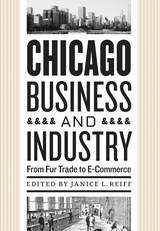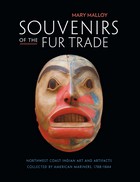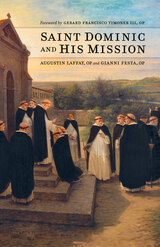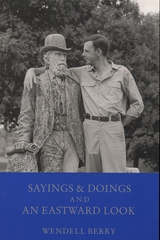
Drawing on the award-winning Encyclopedia of Chicago, Janice L. Reiff has compiled a unique history of work in the Windy City. Beginning with an overview of the city’s commercial development, Chicago Business and Industry considers how key industries shaped—and were shaped by—both the local and global economies. The city’s phenomenal population growth, its proximity to water, and its development of railroads made Chicago one of the most productive markets for lumber and grain throughout the nineteenth century. The region’s once-booming steel industry, on the other hand, suffered a dramatic decline in the second half of the twentieth century, when already weakened demand met with increasing international competition. Chicago Business and Industry chronicles the Chicago region’s changing fortunes from its beginning.
Reiff has compiled and updated essays from the Encyclopedia covering the city’s most historically famous—and infamous—companies, from the Union Stock Yard to Montgomery Ward to the Board of Trade. The book concludes with a historical account of labor types and issues in the city, with attention to such topics as health-care workers, unemployment, and unionization. Today, Groupon and a host of other high-tech firms have led some experts to christen Chicago the Silicon Valley of the Midwest. Reiff’s new introduction takes account of these and other recent trends.
Engaging, accessible, and packed with fascinating facts, Chicago Business and Industry invites readers into the history and diversity of work in the city, helping them understand how Chicago became Chicago.



American mariners made more than 175 voyages to the Northwest Coast during the half-century after the ships Columbia and Washington pioneered the route from Boston in 1787. Although obtaining sea otter pelts for the China trade was the original purpose of the voyages, the art and culture of Northwest Coast Indians so intrigued and fascinated American sailors that the collecting of ethnographic artifacts became an important secondary trade. The Indians traded masks, hats, paddles, pipes, fishhooks, spoons, clothing, and canoe models from their canoes to the decks of Yankee vessels.
In this act of exchange, the artifacts moved from one world to another—first to shipboard, and later to the “cabinets of curiosities” of learned societies in Massachusetts, where many of them found homes. The objects were the first examples of Northwest Coast Indian material culture to enter American museums, and they influenced perceptions of Northwest Coast Indian people and their complex cultures.
By carefully researching the records of ten institutions and the shipboard journals of more than a dozen mariners, Mary Malloy has brought details about these early collections together for the first time. From utilitarian objects to artistic masterpieces, these souvenirs tell a story of commerce and cultural exchange that reached across the continent during the period when Americans were first beginning to look westward.
READERS
Browse our collection.
PUBLISHERS
See BiblioVault's publisher services.
STUDENT SERVICES
Files for college accessibility offices.
UChicago Accessibility Resources
home | accessibility | search | about | contact us
BiblioVault ® 2001 - 2025
The University of Chicago Press









